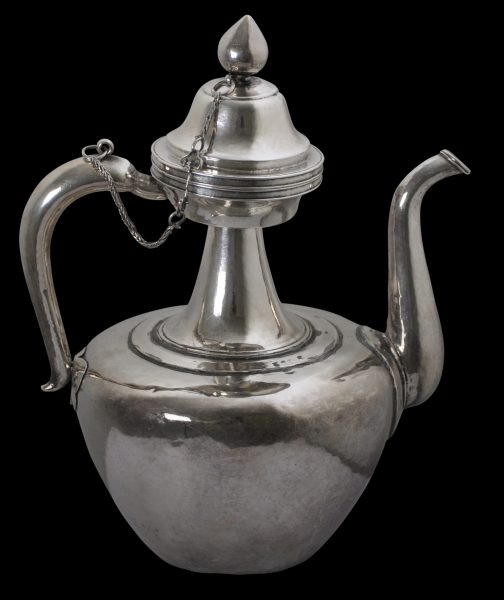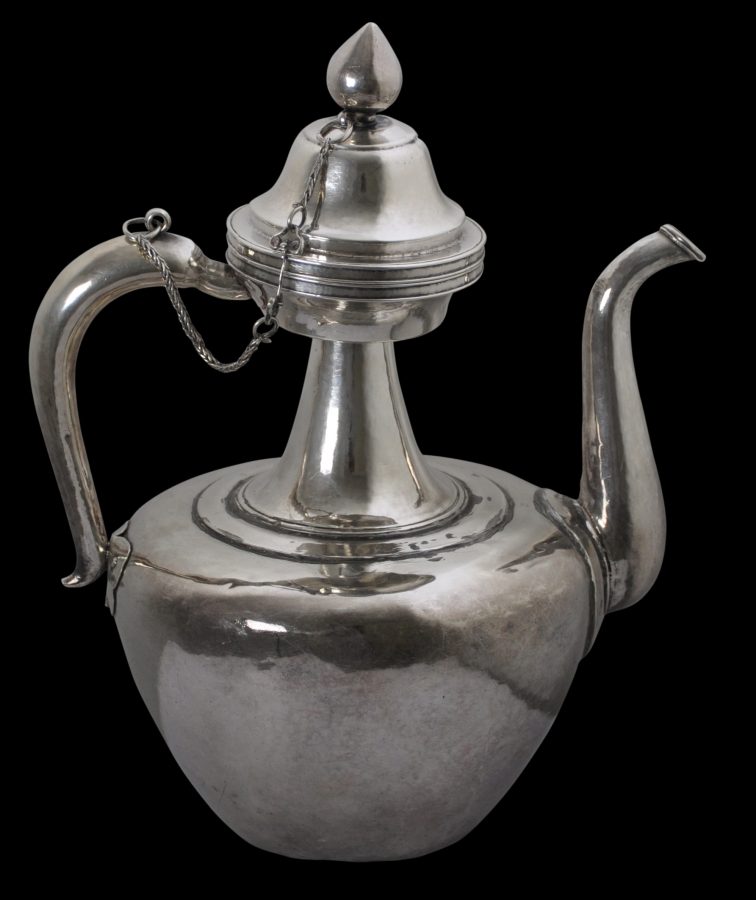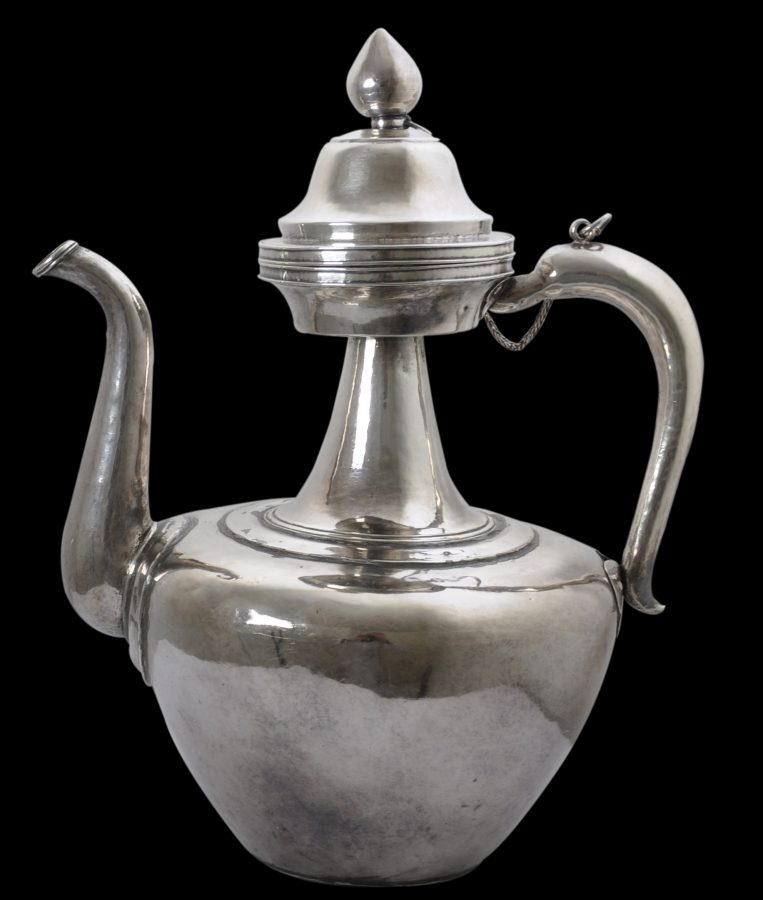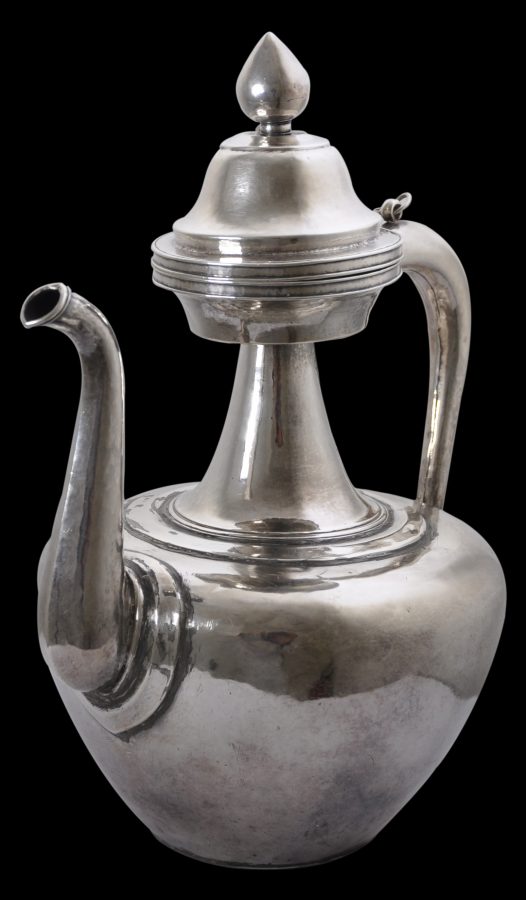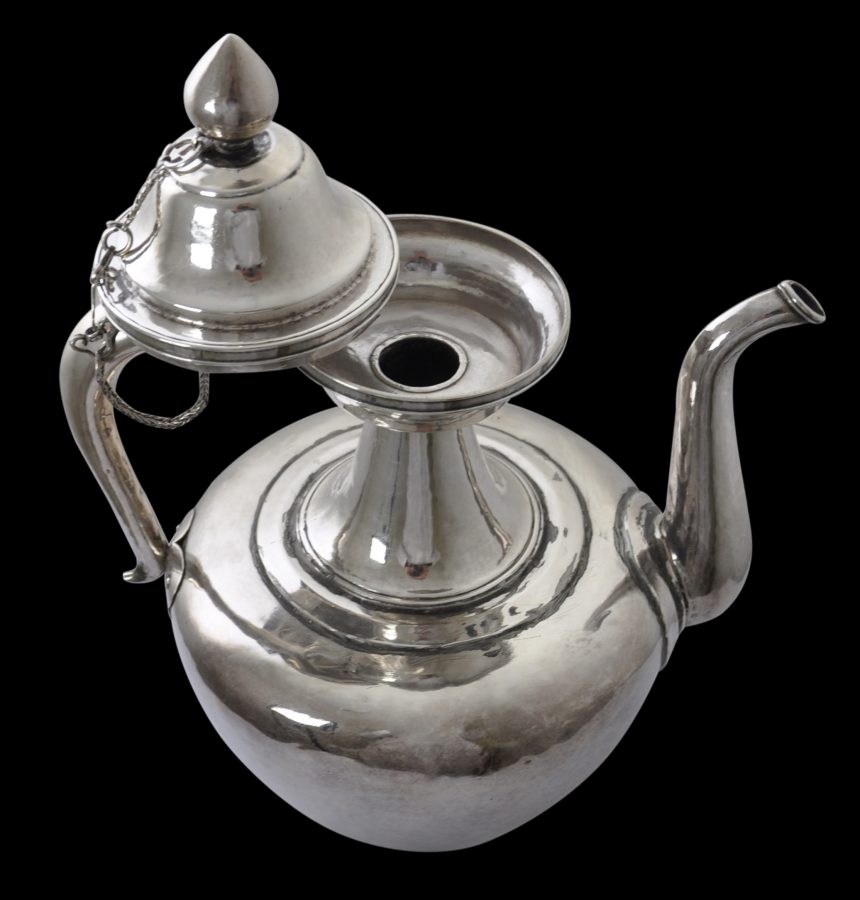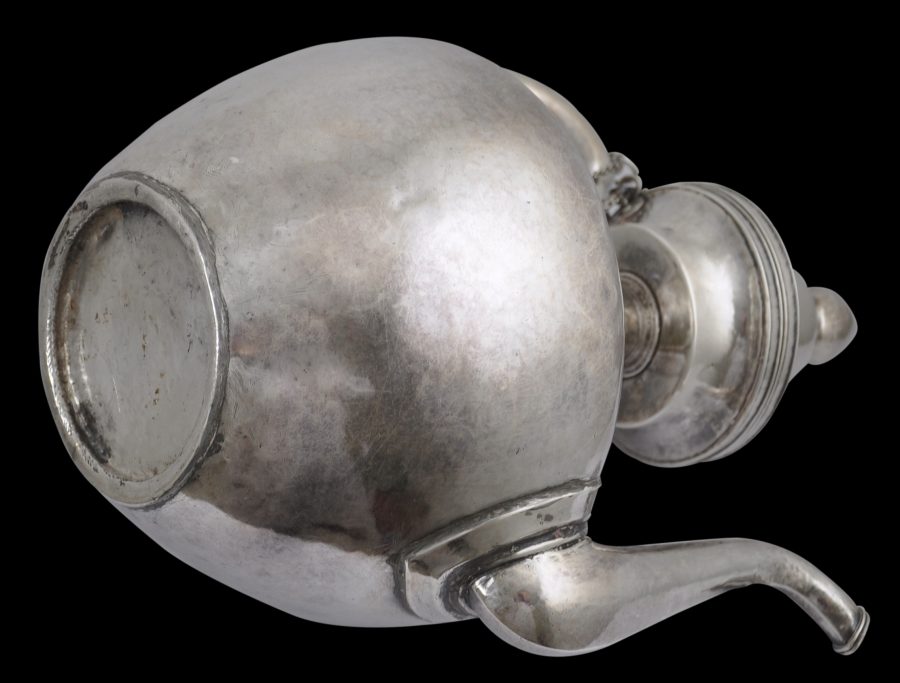This very elegant ewer of high-grade, solid silver most probably is from central Tibet. The quantity of near-pure silver that has been used suggests that it would have come from the house of a noble, or was commissioned by a noble to serve yak butter tea to monks during their long prayer sessions, and is a testament to how sumptuous some of Tibet’s monasteries became. Thurman and Weldon (1999, p. 54) mention that the Tashi Lhunpo monastery was said to have used some two hundred large silver teapots simply to serve its resident monks.
The example here has a flattened body, a long neck, a wide mouth and a domed lid with a lotus-bud finial. The lid is attached to the handle by the fine, original chain.
The teapot is without any other decoration and it is this simplicity, which allows the luxurious silver content of the item to feature clearly, which makes this item especially beautiful and sculptural.
A Tibetan solid silver teapot although with more decoration and attributed to the 18th century is in the Newark Museum and is illustrated in Reynolds (1999, p. 156).
The teapot is in excellent condition. The silver has obvious and clear age and wear. It dates at least to the 19th century and possibly earlier.
References
Reynolds, V. et al, From the Sacred Realm: Treasures of Tibetan Art from the Newark Museum, Prestel, 1999.
Thurman, R., & D. Weldon, Sacred Symbols: The Ritual Art of Tibet, Sotheby’s/Rossi & Rossi, 1999.


